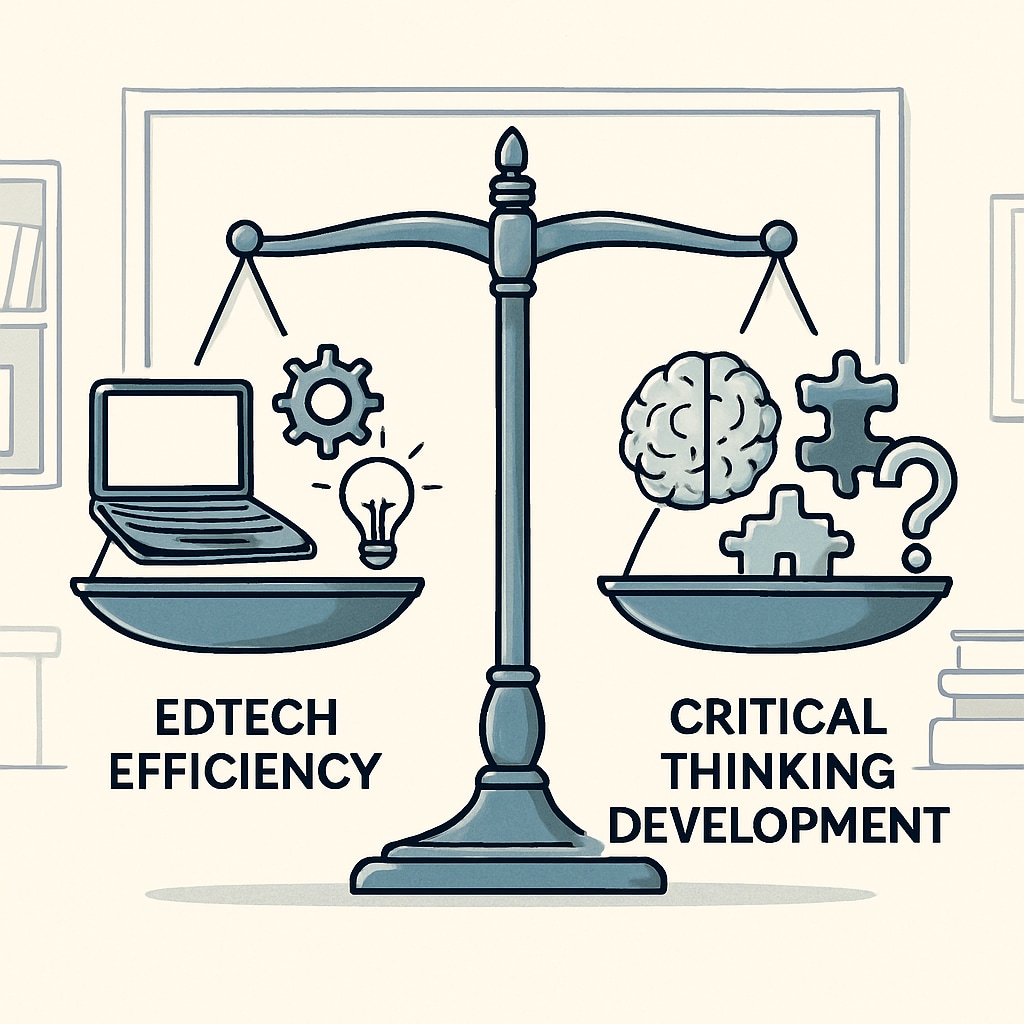In today’s K12 classrooms, education technology (EdTech) tools such as Chromebooks have become indispensable for streamlining lessons, improving access to resources, and enhancing collaboration. While these tools undoubtedly boost efficiency, the growing reliance on them raises concerns about their impact on students’ critical thinking development. As educators prioritize speed and convenience, are we unintentionally jeopardizing the ability of students to think deeply, analyze, and question?

Streamlined Learning: The Promise of EdTech
Education technology has revolutionized teaching methods. Chromebooks, for example, allow students to access digital textbooks, conduct research, and submit assignments with unparalleled ease. Teachers benefit from platforms that automate grading and track student progress, saving valuable time. Efficiency in these areas enables educators to focus on lesson delivery and individualized learning plans.
However, the emphasis on technology-driven efficiency can lead to a more passive learning experience. Students often rely on pre-set templates, automated tools, and instant solutions, which may limit their ability to develop critical thinking and problem-solving skills. For example, instead of analyzing source credibility, students may simply accept search engine results as fact.
The Critical Thinking Conundrum
Critical thinking—the ability to evaluate, synthesize, and question information—is essential for success in higher education and the workforce. Yet, studies have shown that students exposed to digital-heavy classrooms often struggle with these skills. According to an article from Britannica, critical thinking requires active engagement, debate, and reflection—processes that are sometimes bypassed in tech-driven learning environments.
For example, when students use Chromebooks to complete multiple-choice quizzes, the focus shifts toward immediate answers rather than the thought process behind them. This approach can inadvertently foster surface-level understanding, leaving deeper cognitive abilities underdeveloped.

Balancing Efficiency and Cognitive Growth
To strike a balance between EdTech efficiency and critical thinking development, educators must adopt a strategic approach. Here are some actionable recommendations:
- Incorporate Open-Ended Assignments: Encourage students to write essays, participate in debates, and solve problems that require critical analysis.
- Use Technology as a Tool, Not a Replacement: Limit reliance on automated features and integrate tasks that require manual effort and reasoning.
- Promote Collaborative Projects: Group activities stimulate discussion, differing viewpoints, and deeper thinking.
- Train Teachers: Provide professional development on how to leverage EdTech without compromising cognitive growth.
Additionally, educators can integrate platforms that are specifically designed to foster critical thinking, such as project-based learning apps or interactive discussion forums.
Conclusion: A Call for Thoughtful Integration
The rise of Chromebooks and similar EdTech tools offers undeniable benefits in efficiency and accessibility. However, it is crucial that educators remain vigilant about the potential drawbacks, particularly the erosion of critical thinking skills. By thoughtfully integrating technology into lesson plans, schools can ensure students not only benefit from modern tools but also build the cognitive abilities needed for lifelong success.
As a result, the question isn’t whether technology belongs in the classroom—it’s how to use it wisely. With careful planning, EdTech and critical thinking can coexist, creating a balanced and effective learning environment for future generations.


